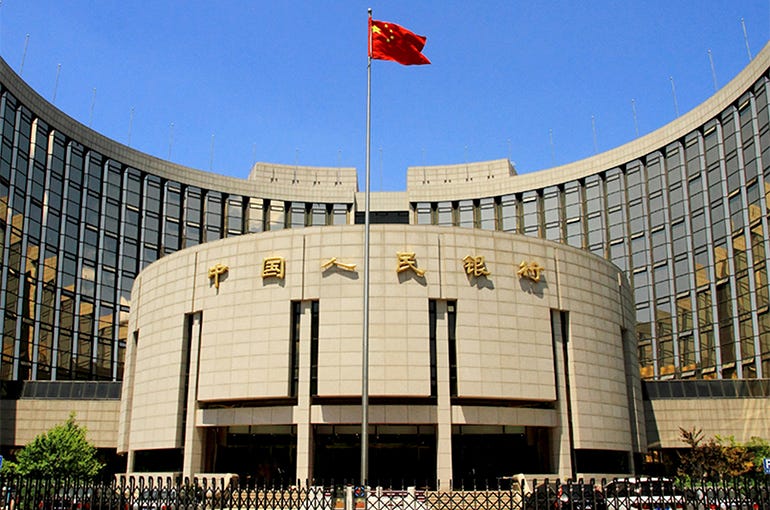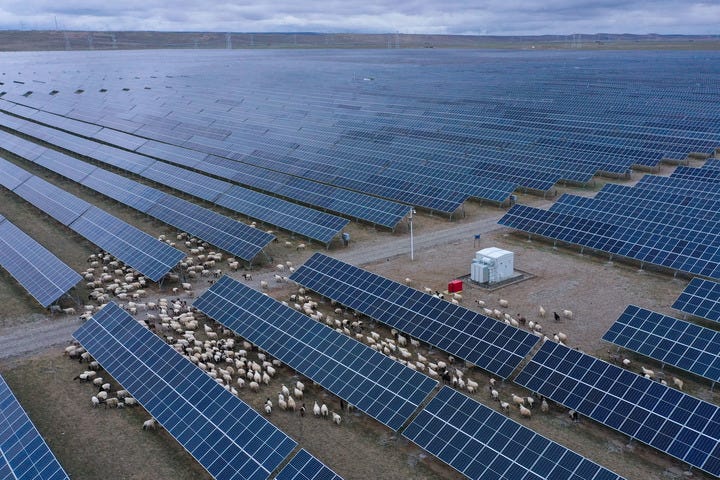Must-Read China Economic News (Oct. 19-25)
Key lending rates cut; SWIFT conference in Beijing; opening-up in value-added telecom services; Tim Cook's meetings with Chinese regulators...
Greetings and welcome to the latest edition of PekingEnsight! We're thrilled to have you join us once again as we navigate the ever-evolving landscape of the Chinese economy.
⭐Under the Spotlight
Key lending rates cut
China cut its market-based benchmark lending rates by 25 basis points on Oct. 21, with the one-year loan prime rate (LPR) down to 3.1 percent from the previous 3.35 percent.
The over-five-year LPR, on which many lenders base their mortgage rates, was lowered to 3.6 percent from 3.85 percent.
The larger-than-expected cut, which was the third LPR reduction this year, came after central bank governor Pan Gongsheng told a financial forum last week that the LPRs would move downward by 0.2 to 0.25 percentage points.
Major commercial banks, aligning with central bank policies, have already moved to lower deposit rates.
In a further step to support the real economy, Pan has also indicated that the reserve requirement ratio, which was cut by 0.5 percentage points in late September, could be lowered by a further 0.25 to 0.5 percentage points within this year, depending on the liquidity situation.
SFISF in operation
China's central bank said on Oct. 21 that it has conducted the first operation of the Securities, Funds and Insurance companies Swap Facility (SFISF) to further stabilize the capital market. The scale of the operation was 50 billion yuan (about 7.03 billion U.S. dollars).
First unveiled in late September, the new policy tool allows eligible securities, funds and insurance companies to use their assets -- including bonds, stock exchange-traded funds and constituent stocks of the CSI 300 Index -- as collateral in exchange for highly liquid assets such as treasury bonds and central bank bills.
The initial total scale of the SFISF is 500 billion yuan. Some 20 securities and funds companies were approved for participation in SFISF operations.
The scale of the SFISF could be expanded depending on the development of the situation, according to the central bank.
PVH probe underway
An investigation into the U.S. firm PVH Corp., led by China's unreliable entity list mechanism, is advancing in accordance, according to the Ministry of Commerce.
"We will fully safeguard PVH's rights to make statements and defenses during the investigation," spokesperson He Yadong told a press conference.
After the investigation, the mechanism office will make decisions based on the results in accordance with the regulations on the unreliable entity list.
The U.S. company, which owns fashion brands Tommy Hilfiger and Calvin Klein, is suspected of boycotting cotton products from China's Xinjiang Uygur Autonomous Region without any factual basis and terminating normal transactions with Chinese companies as well as other organizations or individuals, according to the ministry.
SWIFT conference in Beijing
The Swift International Banker's Operation Seminar 2024 (Sibos 2024) was held this week in Beijing, the first time the Chinese capital hosted the event.
Over 10,000 participants from more than 150 countries and regions gathered for Sibos 2024 to discuss topics including payments, digital assets, trade financing, artificial intelligence and sustainable finance.
The forum had an exhibition area covering 133 financial institutions and third-party organizations, such as J.P. Morgan, Citibank, HSBC and ICBC.
⭐Key Macroeconomic Indicators:
Power consumption
China's electricity consumption, a key barometer of economic activity, climbed by 8.5 percent year on year to 847.5 billion kilowatt-hours (kWh) in September, according to official data.
Specifically, power consumed by primary and secondary industries went up 6.4 percent and 3.6 percent year on year, respectively. Power use in the tertiary sector increased by 12.7 percent.
In the first nine months of 2024, the country's power consumption went up 7.9 percent to 7.41 trillion kWh.
Forex settlement
China's foreign exchange market saw a turnover of 30.27 trillion U.S. dollars from January to September 2024, up 10.1 percent year on year.
Net foreign investment in domestic bonds surpassed 80 billion U.S. dollars in the first three quarters of 2024, while foreign investment in Chinese equities also saw notable improvement, according to the country's forex regulator.
SOE investment
The investment of China's centrally administrated state-owned enterprises (SOEs) in strategic emerging industries reached 1.4 trillion yuan in the first three quarters of the year.
Investment during the reporting period jumped 17.6 percent year on year, accounting for nearly 40 percent of the central SOEs' total investment, data from the State-owned Assets Supervision and Administration Commission showed.
⭐Policy Moves Much-Talked:
Wider opening-up in value-added telecom services
China's Ministry of Industry and Information Technology launched a pilot program this week to expand opening-up in value-added telecom services in four designated areas in Beijing, Shanghai, Hainan and Shenzhen.
The pilot program will allow foreign investors to operate wholly-owned businesses such as Internet data centers and engage in online data processing and transaction processing in the designated areas.
They would also gain greater access to China's cloud computing service and computing power service markets.
The pilot areas are Beijing's national comprehensive demonstration zone for expanding opening-up in the service sector; Lingang new area of the China (Shanghai) Pilot Free Trade Zone and the pioneer area for socialist modernization in Shanghai; Hainan Free Trade Port; and Shenzhen pilot demonstration area of socialism with Chinese characteristics.
Employment boost
A total of 10.49 million new urban jobs have been created in China during the first nine months of 2024, according to official data. The country aims to generate over 12 million urban jobs by the end of the year.
To achieve the target, China has moved to launch job creation campaigns in key sectors such as advanced manufacturing and the silver economy, while maximizing the use of tax and fee cuts, subsidies and refunds to help businesses maintain stable employment.
In the first nine months, the Chinese government provided over 150 billion yuan in employment support for businesses and employees, data from the ministry showed.
The support included reduced premium rates for unemployment insurance, insurance refunds and subsidies for vocational skill training, according to the human resource ministry.
⭐Read More:
Apple’s Tim Cook meets Chinese regulators
In his second visit to China this year, Apple CEO Tim Cook met two Chinese ministers in Beijing this week.
On Oct. 23, he met with Chinese Minister of Industry and Information Technology Jin Zhuanglong. Topics on their discussion table included Apple's development in China, online data security management, and cloud services.
Jin said China will continue to promote high-standard opening up, develop the digital industry, and transform traditional industries with digital technologies to offer more opportunities and a better business environment for international investors.
Cook said Apple is keen to seize the opportunities in China's opening up, and will continue to increase its investment in the country, contributing to the high-quality development of the industrial and supply chains.
In a separate meeting with Chinese Minister of Commerce Wang Wentao on Oct. 25, Cook said Apple would like to continue serving as a bridge for promoting communication and exchanges in the economic and trade fields between China and the United States.
Wang said mutually beneficial and win-win economic and trade cooperation between China and the United States aligns with the fundamental interests of both countries, and serves as a stabilizing force in their relationship.
Overstretching the concept of national security hinders normal economic and trade exchanges, he said, adding that China is willing to bring China-U.S. economic and trade ties back to a stable path through regular exchanges between governments and enterprises.
Huawei releases new version of home-grown OS
Chinese tech giant Huawei released HarmonyOS NEXT this week, its self-developed operating system built independent of Android architecture.
HarmonyOS NEXT is the fifth iteration of HarmonyOS, which has been installed on over 1 billion devices, said Yu Chengdong, Huawei's executive director, at the event.
Yu said that HarmonyOS NEXT is truly independent from Android and Apple's iOS, with its own operating kernel, programming language, AI framework and other features that were developed without using the Linux kernel or Android open-source code.
More than 15,000 applications and meta-services are available for use on HarmonyOS, according to Yu.
Compiled by CYR










